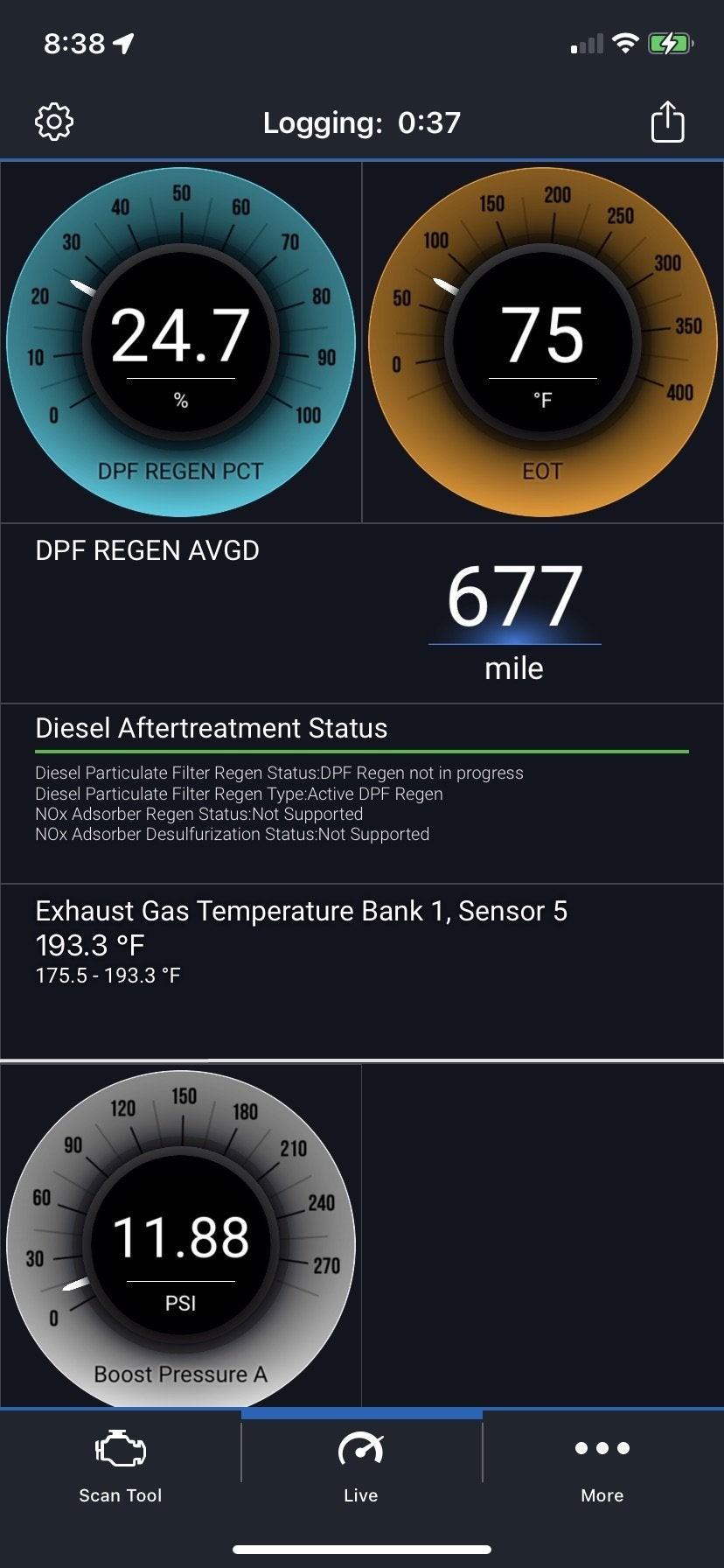For diesel vehicle owners, understanding the health and status of your Diesel Particulate Filter (DPF) is crucial for maintaining optimal engine performance and efficiency. Modern OBDII scanners like the Bluedriver Obdii offer a convenient way to monitor various engine parameters, including those related to the DPF. This review explores using the BlueDriver OBDII scanner to observe live DPF data, providing insights into its functionality and benefits for vehicle maintenance.
One of the key features of the BlueDriver OBDII scanner is its ability to provide live data, allowing users to monitor a wide range of engine parameters in real-time. Connecting the BlueDriver to your vehicle’s OBDII port and using the companion app on your smartphone provides access to a wealth of information. Among this data, parameters related to the DPF are particularly valuable for diesel vehicle owners.
During a recent drive, the BlueDriver OBDII scanner was used to monitor the “Diesel Aftertreatment Status” and related DPF parameters. One particularly interesting parameter is “DPF Regen Pct,” which appears to indicate the current soot load or how “clogged” the DPF is. Observing this parameter revealed dynamic changes in DPF status under different driving conditions. For instance, the DPF Regen Pct was seen to increase to 33% during periods of cold engine operation and uphill driving at lower speeds and boost levels. Conversely, when the engine reached operating temperature and maintained higher speeds with moderate boost, the percentage decreased, suggesting passive regeneration occurring as the hotter exhaust burned off accumulated soot.
 BlueDriver OBDII App displaying live diagnostic data for Diesel Particulate Filter (DPF) including Regen Percentage, Average Regen Interval, and Exhaust Gas Temperature
BlueDriver OBDII App displaying live diagnostic data for Diesel Particulate Filter (DPF) including Regen Percentage, Average Regen Interval, and Exhaust Gas Temperature
Another valuable data point provided by BlueDriver is “DPF Regen Avgd,” representing the average miles driven between DPF regeneration cycles. This metric can be useful in understanding driving habits and their impact on DPF regeneration frequency. Factors such as frequent idling, stop-and-go driving, use of four-wheel drive, and even seasonal changes in fuel blends can influence this average. Monitoring this value over time can help optimize driving habits to promote more efficient DPF operation and potentially extend DPF lifespan.
The BlueDriver OBDII scanner also provides access to other relevant engine parameters such as EOT (Engine Oil Temp) and Exhaust Gas Temp (Bank 1, sensor 5). While the Engine Oil Temperature is a standard and easily understood metric, the Exhaust Gas Temperature readings can be more complex, requiring careful selection of the correct sensor within the BlueDriver app to ensure accurate data interpretation. Monitoring exhaust gas temperatures can provide further insight into the DPF regeneration process and overall exhaust system health. Finally, Boost pressure, a more universally understood parameter, is also readily available through the BlueDriver, offering a general indication of engine load and performance.
In conclusion, the BlueDriver OBDII scanner proves to be a valuable tool for diesel vehicle owners looking to monitor their DPF status and overall engine health. The ability to access live data, particularly DPF Regen Pct and DPF Regen Avgd, provides actionable insights into DPF function and the influence of driving habits. By regularly monitoring these parameters with BlueDriver OBDII, users can gain a better understanding of their diesel vehicle’s performance and potentially optimize driving practices for improved efficiency and longevity.

